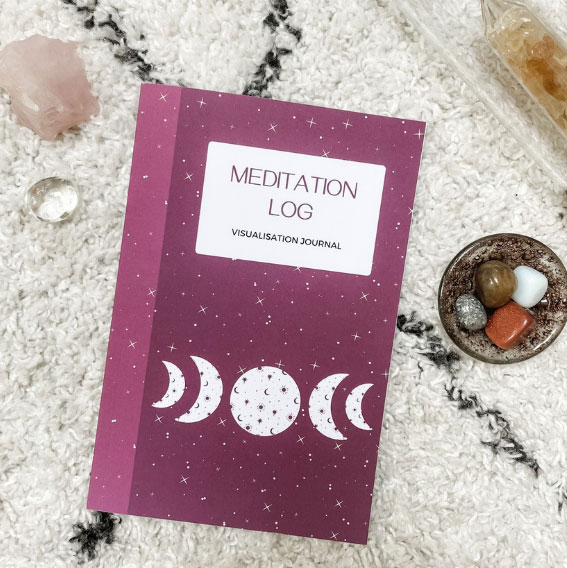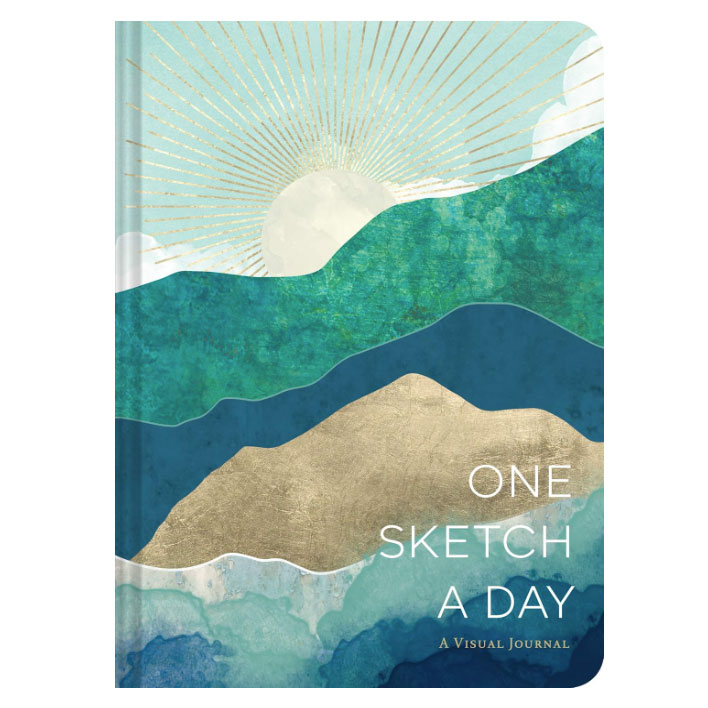Put pen to paper: 7 journal types to try
Discover the diverse journal types and find your perfect match with this guide

If you find mindfulness a tricky habit to develop, give journaling a try. In short, journaling is the art of writing down your thoughts and feelings in a mindful fashion, keeping an eye on your emotions and triggers. We can use journaling to reflect on our behaviours and help solve anything that keeps reoccurring.
Journaling is on a par with meditation as it taps into that deep part of your psyche that may ordinarily be drowned out by the noisier distractions in your head. You're giving yourself a quiet moment to 'be' and look inwards.
We can use journaling as a management tool for the stresses that modern life throws at us. Journals can be used to manage workloads and organise racing thoughts and potentially anxiety-inducing 'to-dos', as well as calm yourself by dispassionately analysing the day.
Journaling also trains your brain by using both hemispheres at the same time; the creative right side and rational left side. There are so many journaling practises to try, so don't feel constrained to one - or if one type doesn't 'stick', start a new blank page and try again.
9 journal types to try
1. Gratitude journal
Gratitude journaling is a way of reflecting and taking stock of what you’re thankful for in your life. These things can be life-changing or minuscule in detail, but it’s important as you are essentially rewiring your viewpoint by looking at your life in a positive way.
If we think hard on the people and events in our life that we are grateful for, we may find ourselves becoming less materialistic – realising the things we usually value (materially) aren’t what make the world go around! Allow the gratitude you practise in this journal type to spill into your everyday life.
2. Spiritual journal
If you are a spiritual or religious person you can use a journal to help you explore this more fully. You can use this kind of journal to carve out time in your day for this kind of focus and track your growth. Pick a daily reflection and work on it in your journal.
Sign up to our free daily email for the latest royal and entertainment news, interesting opinion, expert advice on styling and beauty trends, and no-nonsense guides to the health and wellness questions you want answered.

This meditation log is a great option for anyone new to journaling. With no blank pages in sight, this offers dedicated spaces to record daily gratitudes, your goals and manifestations, free writing and good things you want to focus on. This guided option is perfect if you're not sure where to begin.

When it comes to beautiful journals, you can't go wrong with Papier's collection, and this Italian Summer bullet option is topping our wishlist right now. Available in four different colours, this A5 journal has 192 sides of plain dotted paper, just waiting for you to fill with you want to write. It would also make a great gift, especially with name personalisation as a special added touch.

If you find it easier to articulate thoughts through pictures rather than words, this beautiful One Sketch A Day journal is the one for you. It features enough space for 365 small drawings, which would make the most wonderful keepsake of the year. This is a fantastic option if you struggle with words - no artistic skills required!
3. Prompted journal
If the idea of a blank page fills you with dread, help is at hand. Journaling has become really popular over recent years, and for many people prompted journals are a great place to start.
These journals guide you through the process and can keep you accountable and focused. The wide range of prompted journals also cater for many specific types and kinds of journal-ers – from teens to people looking to be more mindful.
There is no standard prompted journal, as the ‘right’ choice for you may not be the same for everyone. Keep in mind what you want to get out of journaling when looking for a prompted journal. Take a look at reviews to check the tone and commitment level before you buy.
4. Dream journal
Dreaming is a little like unconscious mindfulness, our brains process our past in a subjective way, filing it all away. Annoyingly, we often forget our dreams as soon as we wake. Writing a dream journal can help improve our dream memory skills and you may find that after a period of dream journaling your dream memory becomes stronger.
Try to write your dreams down as soon as you wake up to catch all the details. You can then use a dream dictionary to find reoccurring themes or try to work out your own personal meanings.
5. Positivity journal
Try to use your journaling time to reflect on the positive things in your life. When we drill down we can find that under the surface there is a lot to be happy about. When things go wrong in life it is important to look for the silver linings. There is no point in practising positivity in your writing if you still expect everything to go wrong when you wake every morning. Remember, use the power of positive thinking; like attracts like!
6. Bullet journal
A bullet journal, on first inspection, often looks like a confusing mix of shorthand and symbols. Essentially bullet journaling is rapid logging. You’re capturing everything you need to in bulleted lists and this can be incredibly useful for planning and logging important tasks (less so for personal introspection).
Tasks, events and notes are symbolised by dots, circles and dashes respectively. You can use your own method, such as using asterisks to signify importance or exclamation marks to show great ideas or things you don’t want to forget!
Bullet journaling is an incredibly efficient way to get all your thoughts down on paper, and as a reminder to action your ideas!
7. Art journal

Journaling doesn’t have to take the form of a handwriting-heavy tome. If you are a visual person or a creative one at that, an art journal may be the best way for you to begin your journaling journey. Try to include your sketches, experiments and your reflections on how a task turned out – whether this is a piece of art or a day-to-day task.
Play with your journal, often we can articulate ourselves better through mark making and art than through words. It’s important to get pen (or pencil/crayon/paint) to paper and make that first mark and not get too hung up on perfection – this journal is just for you, you don’t have to let anyone else in.
8. Free writing
Spill your thoughts out onto your page. Free writing is quite different to the other types of journaling on this list. While journals such as dream journals, bullet journals and planning journals work due to their structure, free writing is more free (the clue is in the name)!
Think of it like a brain dump or stream of consciousness writing. Try not to edit yourself and you may find you’re getting into the nitty gritty of what you’re really concerned about. Use this kind of journaling consciously, instead offeeling like it’s yet another thing to do on your list of jobs, enjoy the task. Focus on your ‘why’ of journaling and keep yourself in the present moment while writing.
9. Planning journal
Journaling can have a finite timeline. You may wish to journal about a very specific part of your life; whether positive or negative. You may also wish to journal about current events – we live in interesting times and by including clippings and collages you can create a full picture of what life is like.
This article originally appeared in Spirituality & You magazine.
You must confirm your public display name before commenting
Please logout and then login again, you will then be prompted to enter your display name.